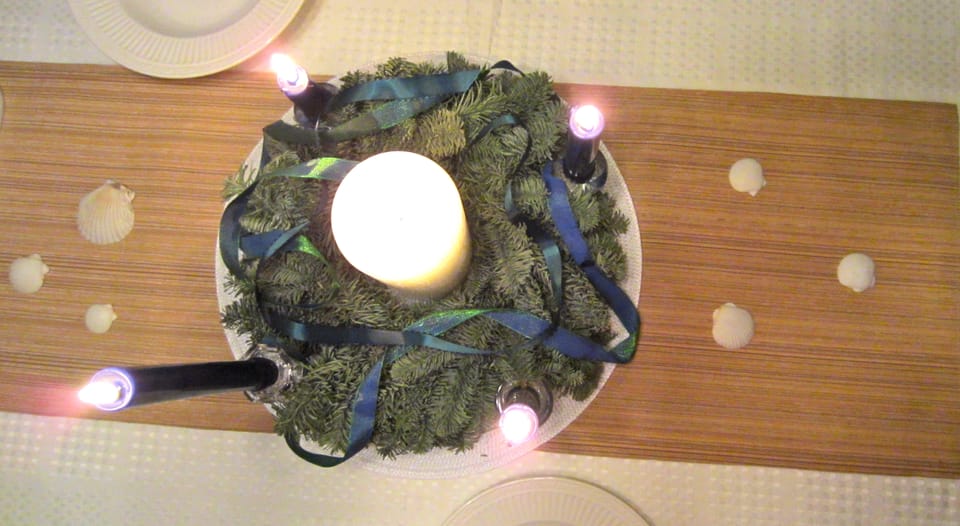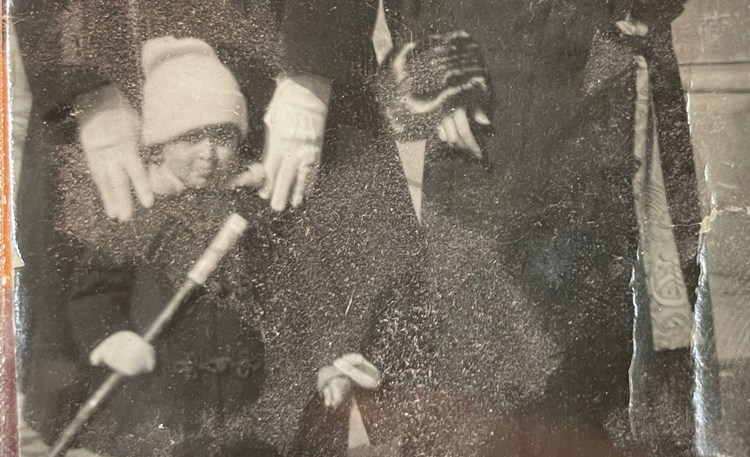Experiments at Home

This Sunday we celebrated the Baptism of Our Lord. Our children woke up to scallop shells (see them? even though they are really too small for the setting?) scattered around the Advent wreath. (On the other hand, please do not notice how very un-Martha those ribbons are.)
Since our church also transferred the feast of the Epiphany to this Sunday, we lit all the wreath’s candles. It was the wreath’s last hurrah.
Then, after worship, I did an experiment. Guess what it was?

We had (five!) baptisms that morning, and I knew they were coming. So I took my little half-pint jar to church, and when the sanctuary was all calm after the worship service (an Epiphany pageant! five baptisms!) I just sauntered quietly in there and scooped up some wonderfully-chrism-smelling holy water. I quickly put the lid on and stowed it in my bag. I scooped up the Book of Occasional Services (BOS) and photocopied the critical pages. Then I went down to the Christian formation storage closet and found myself a piece of chalk (feeling a little sneaky and saying to myself, “This is really about Christian formation… because if this works for me, we will offer it to the congregation next year… this is a liturgical experiment in family formation… right? this is not me stealing chalk from the church… because I would not do that… right?”)
The copied pages, blessed water and the not-blessed-yet chalk went home with me. I had some quiet time surfing the internet and finding out how other people did this thing. The Book of Occasional Services had precisely ZERO rubrics for manual acts.
Then it was fortunate for me that I was ordained a priest in December because once I found an appropriate prayer for blessing chalk, I was authorized to do so! (I changed the language to modern use.) Once my chalk was blessed, I looked around for children. My daughter was otherwise occupied, but as soon as I said “I’m going to do a little experimental house blessing. I’ll write on the house and sprinkle it with water,” my son was very interested.
“Write on the house?” he said.
(His thought process was evident: Usually mothers are staunchly opposed to writing on houses. Mothers who intend to write on houses must be closely observed for further signs of deviant behavior. And she’s also sprinkling the house with water? Clearly I need to keep an eye on these proceedings… they might be fun!)
I fashioned a makeshift aspergillum, and we began at the front door. “First I’m going to say some prayers, and then we can write on the house and sprinkle it with water” was the sum of my instructions to my congregation of one. He joined in with the response to “The Lord be with you” and, once the prayers were over, helped chalk the crosses on the door. I went with the (authorized) BOS service instead of this, this, or any of these and interpreted it to mean I first completed the spoken liturgy and then did manual acts.
Unfortunately in all my research about how to conduct the rite I neglected the critical detail of where exactly on the door to put the inscription:
20 + C + M + B + 12
I knew it went on a lintel. But, confronted with an actual door, it dawned on me that I did not know what a lintel was.
So I think I actually put both inscriptions too high up, above the lintel on the doorframe, where they will go largely unnoticed. No, I don’t think this (completely) defeats the purpose. Remember, this was an experiment.
After making the inscription, I began to asperge the house. Now my son was very, very interested. “I want to do that too!” Reader, I allowed it.
We went through the house, asperging every room. And when we were done, I had the strong sensation that the house was fresh and new again: the unkind words we had spoken and the lack of care we had given certain rooms had been cleared and cleaned away. We could start over, here in the same place we had been. It was a lovely feeling.
Next year, I believe I will be offering the congregation the opportunity for house blessings.





Member discussion